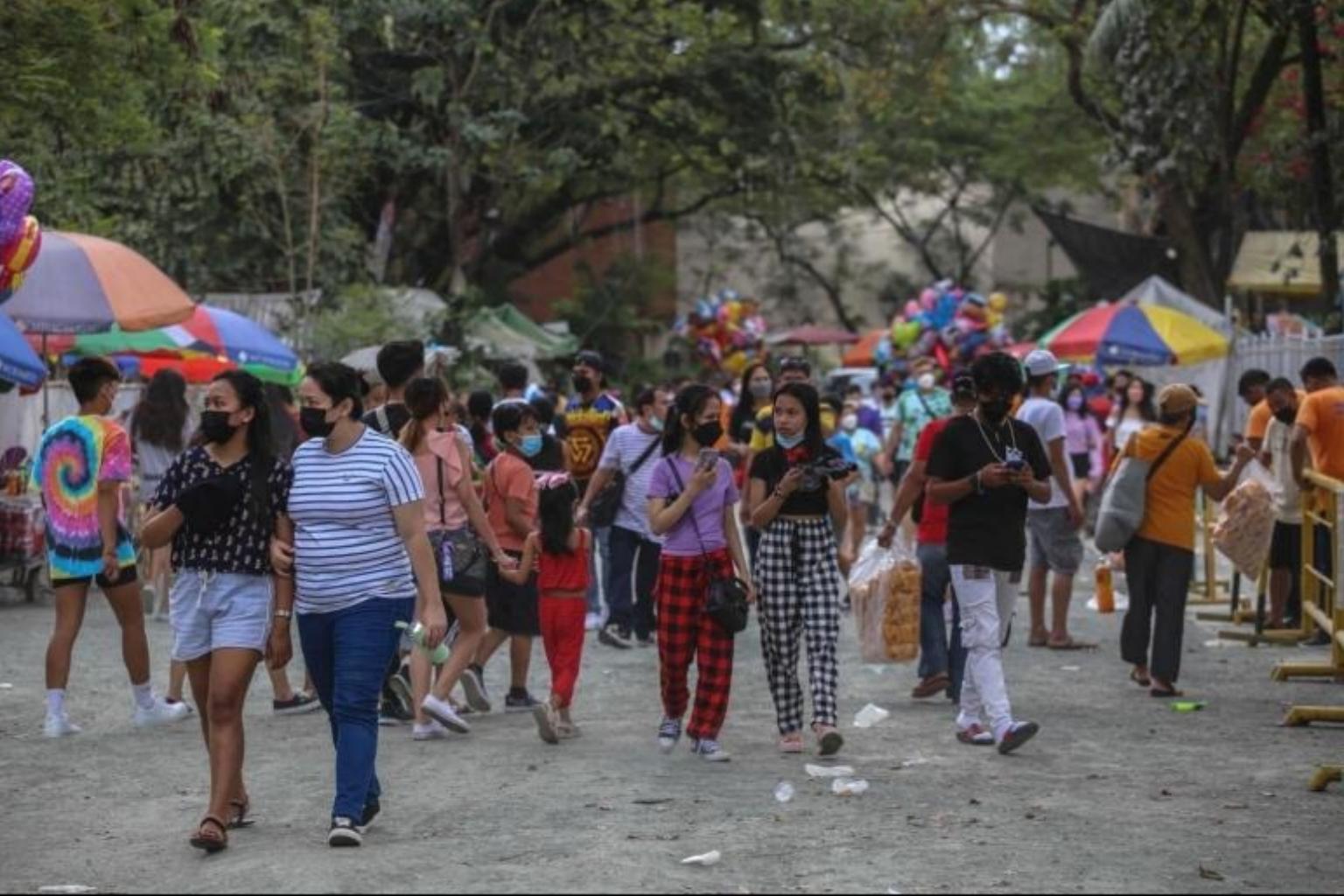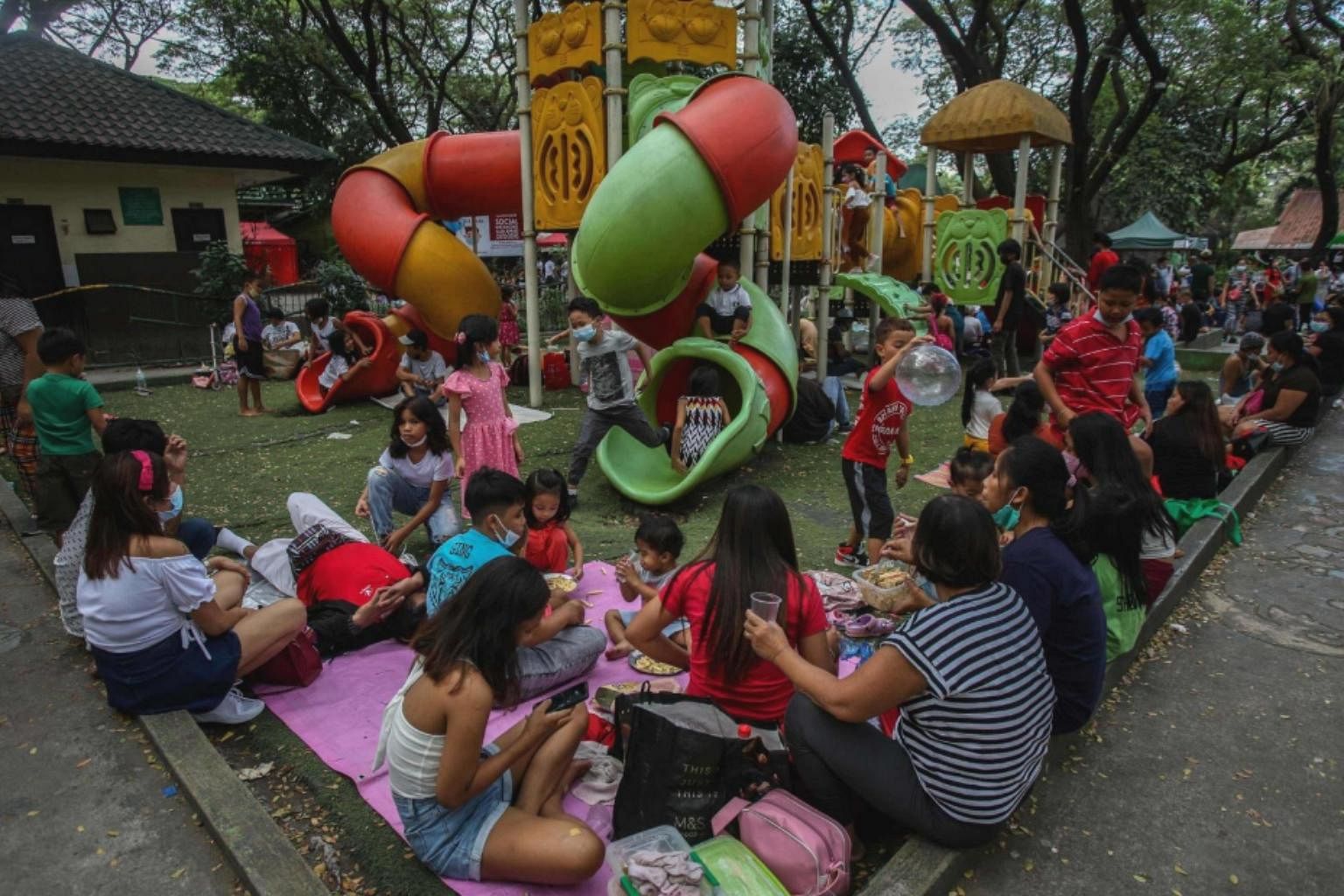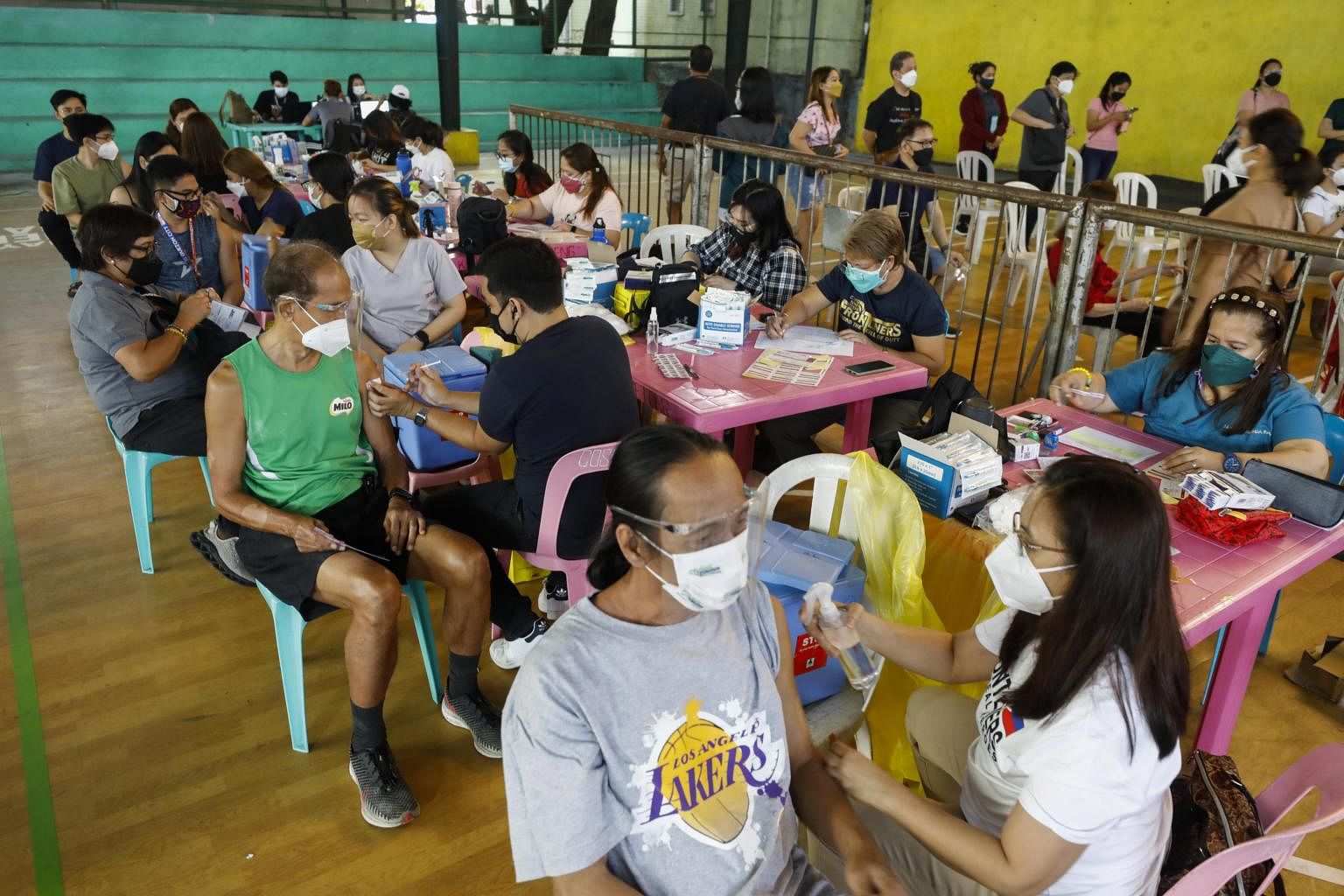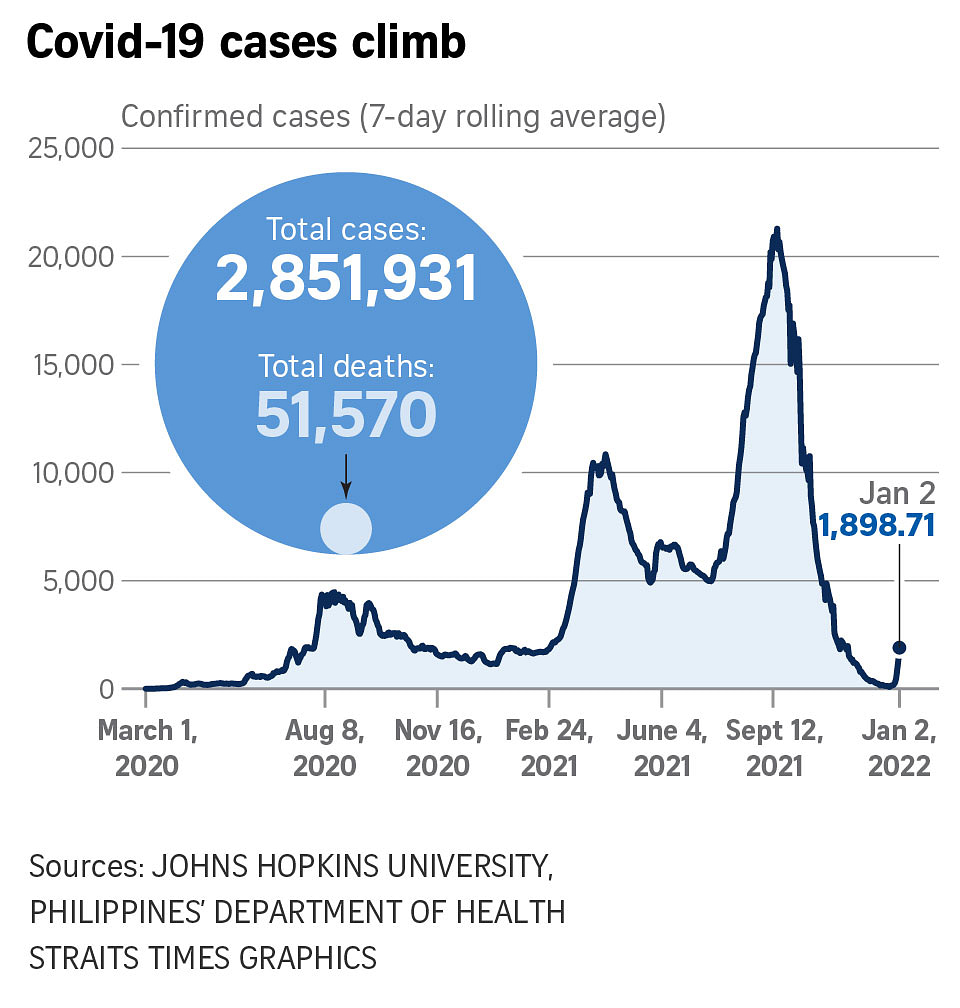Philippines faces biggest Covid-19 surge; Omicron could be dominant strain by end-January
Sign up now: Get ST's newsletters delivered to your inbox

The current surge was moving twice as fast as the wave of infections late last year caused by another highly contagious variant Delta.
PHOTO: AFP
Follow topic:
MANILA - The Philippines is seeing what may possibly be its biggest surge in Covid-19 infections, fuelled by the Omicron variant that could be the dominant strain by the end of this month.
Independent researchers said the current surge is moving twice as fast as the wave of infections late last year caused by another highly contagious variant Delta.
They said the reproduction rate - which measures how fast a virus is spreading or receding - had hit 4 from less than 1 just two weeks ago. A rate of 1 means an outbreak is under control. The Philippines recorded a 2 at the peak of its Delta surge.
A senior health official said Omicron could be the dominant strain in three to four weeks, displacing Delta.
The Health Ministry on Monday (Jan 3) reported that Omicron was already accounting for close to 30 per cent of samples sequenced.
Caseloads hit 4,600 on Sunday, from fewer than 500 on Dec 25, as the positivity rate - the proportion of those tested found to have been infected - rose to 10.8 per cent from less than 1 per cent a week earlier.
There were fewer cases tallied on Monday – 4,084. But this was because 21 laboratories failed to submit their results, according to the ministry.
Health Undersecretary Maria Rosario Vergeire said at a news briefing that with cases growing fivefold in the past two weeks, the Philippines was again at high risk for infections.
Dr Edsel Salvana, an infectious disease expert and an adviser to the Health Ministry, said that while there has yet to be definitive evidence of an Omicron-fuelled community transmission, "there's a possibility that Omicron is already circulating".
This is based on the number of people with infections, especially among the vaccinated and those who have already had their booster shots, and the exponential growth in cases, "though we still don't know the proportion", he added.
With roughly 2.85 million confirmed cases and over 51,000 deaths so far, the country has the second-highest number of infections and deaths in South-east Asia, after Indonesia.
Daily infections surged to new highs after the government eased quarantine curbs, as an outbreak set off by the Delta variant receded.
Shopping malls, restaurants, grocers, gaming arcades and cinemas saw large crowds, as Filipinos stepped up Christmas and New Year celebrations after more than two years of sweeping restrictions.
Most cases have been in Metro Manila - an urban sprawl of 16 cities that is home to more than 13 million. There were 3,317 new infections on Jan 2, up from just 97 on Dec 20. The area tallied a total of 10,292 new cases in the past two weeks.
But with 95 per cent of the region's population having at least one dose of a vaccine, the government is confident a majority of cases will be mild or moderate, and hospitals will not be overwhelmed with patients with severe symptoms.

Health Undersecretary Leopoldo Vega said less than 30 per cent of hospital beds were being occupied by Covid-19 patients.
The Health Ministry disclosed that 85 per cent of those in hospitals with severe symptoms and 95 per cent of those who died were unvaccinated or received just one dose.
"This proves that vaccines work," said Dr Vergeire.
Mayor Benhur Abalos, who currently speaks for all mayors in Metro Manila, said there was no need yet to put the capital region under a hard, sweeping lockdown.
"It's untenable for us to shut down again… We just have to learn to live with this (new) variant," he told reporters on Monday.
The government's Covid-19 task force said it was instead imposing sweeping mobility restrictions on those still unvaccinated.
This group would have to stay home until they are vaccinated. They can leave home only to buy essential goods, such as food and medicine.
The task force said it would also begin randomly checking vaccination cards of those dining in restaurants to weed out fake ones.
The government has already put Metro Manila on the third-highest level of alert from Monday (Jan 3) to Jan 15.

Restaurants, churches, restaurant dine-in services, amusement parks, tourist attractions, beauty salons and fitness studios would open at lower capacities.
In-person classes, contact sports, funfairs and casinos have been suspended, while localised lockdowns targeting specific buildings, streets and neighbourhoods will also be enforced.
The Tourism Ministry, meanwhile, is continuing its probe on hotels designated as quarantine facilities that are said to be allowing overseas travellers to leave before they complete their mandatory quarantine.
In an incident that has gone viral, a young tourist from the United States was reported to have snuck out of a quarantine facility on Dec 23 to meet her friends at a popular commercial district in Metro Manila. She tested positive four days later.


